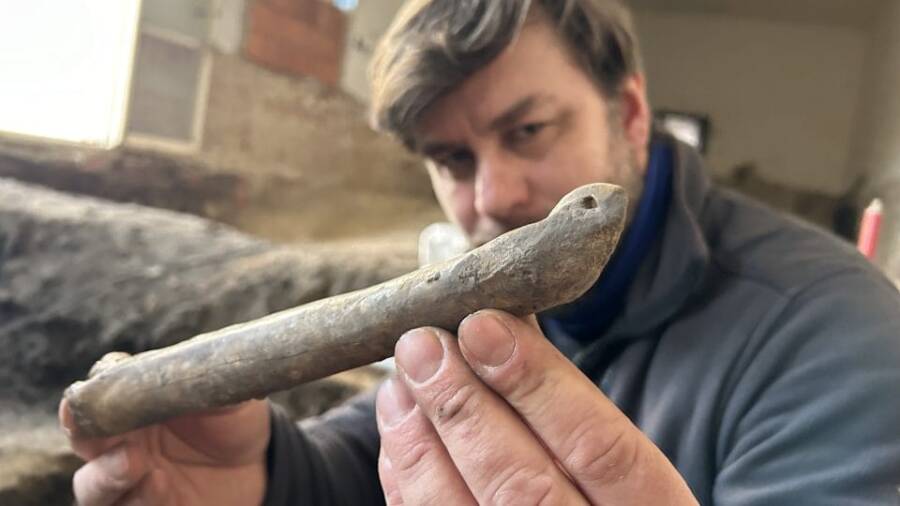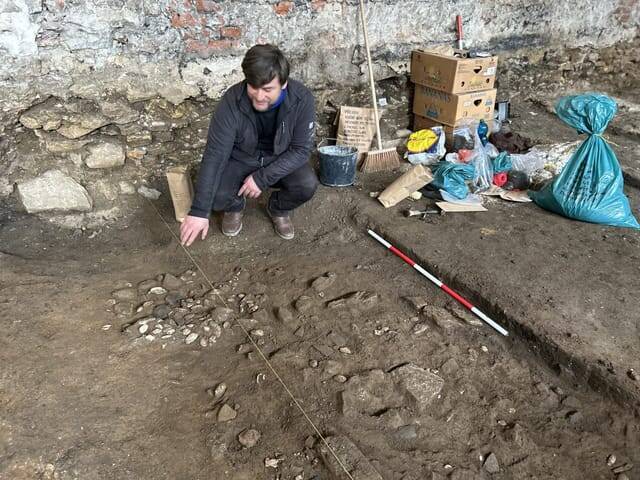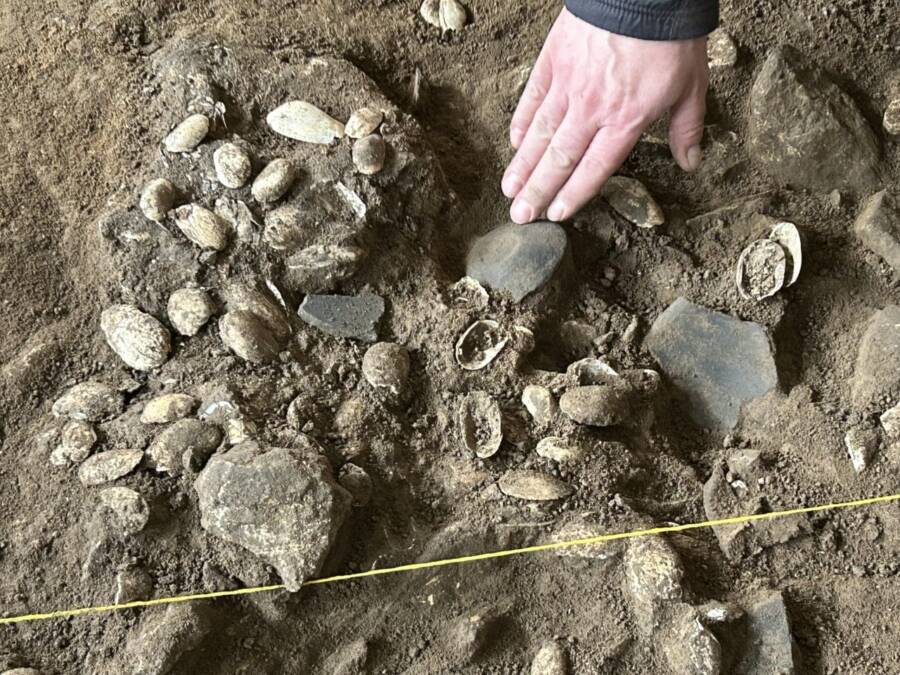The bone skate, discovered in the Czech Republic's Olomouc Region, is believed to be part of a larger European tradition of crafting skates to traverse icy environments.

Lenka Kratochvílová/Czech RadioArchaeologist Zdeněk Schenk holding the 1,000-year-old bone skate.
While excavating the basement of a home in Přerov, Czech Republic, archaeologists from Comenius Museum recently made an astonishing discovery: a 1,000-year-old ice skate made of animal bone.
Researchers note that this finding is part of a larger 10th and 11th century European tradition of creating bone skates in the continent’s more frigid locations. They believe the skate’s owner likely used it simply to traverse icy paths during winter, or to carry heavy sleds.
The Rich History Of Přerov

Lenka Kratochvílová/Czech RadioArchaeologist Zdeněk Schenk showing the location of the discovery.
The discovery was made during a larger excavation project in the Czech Republic’s historic town of Přerov, located on the River Bečva.
In recent months, archaeologists from the Comenius Museum have been organizing digs throughout the city’s Upper Square. During the 10th and 11th centuries, this part of the city featured an impressive fortress.
“The Upper Square is located on a hill above the left bank of the River Bečva,” Zdeněk Schenk, an archaeologist on the project, told Radio Prague International. “But at that time, the whole early medieval agglomeration, with the exception of the fortified square, was actually made of several smaller settlements located along the branches and the meanders of the Bečva River.”
According to the city’s website, the first written mention of Přerov appeared in a 12th-century record that noted its administrative importance for the Bohemian royal dynasty.
“There was a very important fortress in the area of the Upper Square,” Schenk said. “It served as a stronghold for Polish King Boleslav the Brave, who occupied Moravia at the time and had his soldiers stationed there.”
Knowing the area’s potential for archaeological discovery, researchers began their excavations — and stumbled upon the curious bone skate.
An Unexpected Find In A Basement
The excavation team were digging through a basement in the Upper Square when they came across a long, curved item.
“The object has a specific shape,” Schnek said. “On one side, it is curved into a tip which has a hole drilled in it and there is another hole at the back. They were used to thread a strap through, which was used to attach the skate to a shoe or to a wooden sledge.”
Researchers noted that whoever carved the skate likely used a horse shin bone. And they likely did not intend to use it for recreation.
“Rather than skating, they would shuffle along the frozen surface with the help of a stick or two,” Schnek explained. “They would also attach the blades to sledges to carry a load of goods across the frozen water.”
The researchers found the skate near several pottery fragments, which they used to begin the process of dating the skate.

Lenka Kratochvílová/Czech RadioResearchers discovered the skate among pottery fragments.
An analysis of the pottery dated it to sometime between the second half of the 10th and the first half of the 11th century. Researchers believe the bone skate likely came from the same period.
This time frame particularly made sense given researchers’ knowledge of the European tradition of bone skate production.
“We know of other similar pieces found in Central Europe and especially in north-western Europe, in Scandinavia,” Schnek said. “They mostly come from the same time frame as the one from Přerov and they are often found in 10th-century Viking settlements.”
A similar bone skate was also uncovered in the vicinity in 2009. Researchers hope to uncover more finds like these to further enrich our understanding of this corner of European culture.
After reading about the discovery of the bone skate, dive into the story of the Grauballe Man, an Iron Age man whose pristine remains were found in a bog in 1952. Then, read about the bloody Defenestration of Prague and the start of Thirty Years’ War.





